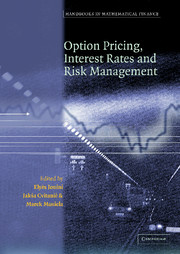16 - Theory of Portfolio Optimization in Markets with Frictions
from Part four - Utility Maximization
Published online by Cambridge University Press: 29 January 2010
Summary
Introduction
The main topic of this survey is the problem of utility maximization from terminal wealth for a single agent in various financial markets. Specifically, given the agent's utility function U(·) and initial capital x > 0, he is trying to maximize the expected utility E[U(Xx,π (T))] from his “terminal wealth”, over all “admissible” portfolio strategies π(·). The same mathematical techniques that we employ here can be used to get similar results for maximizing expected utility from consumption; we refer the interested reader to the rich literature on that problem, some of which is cited below.
The seminal papers on these problems in the continuous-time complete market model are Merton (1969, 1971). Using Itô calculus and a stochastic control/partial differential equations approach, Merton finds a solution to the problem in a Markovian model driven by a Brownian motion process, for logarithmic and power utility functions. A comprehensive survey of his work is Merton (1990). For non-Markovian models one cannot deal with the problem using partial differential equations. Instead, a martingale approach using convex duality has been developed, with remarkable success in solving portfolio optimization problems in diverse frameworks. The approach is particularly well suited for incomplete markets (in which not all contingent claims can be perfectly replicated). It consists of solving an appropriate dual problem over a set of “state-price densities” corresponding to “shadow markets” associated with the incompleteness of the original market.
Information
- Type
- Chapter
- Information
- Handbooks in Mathematical FinanceOption Pricing, Interest Rates and Risk Management, pp. 577 - 631Publisher: Cambridge University PressPrint publication year: 2001
Accessibility standard: Unknown
- 9
- Cited by
